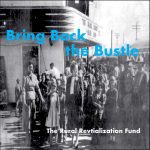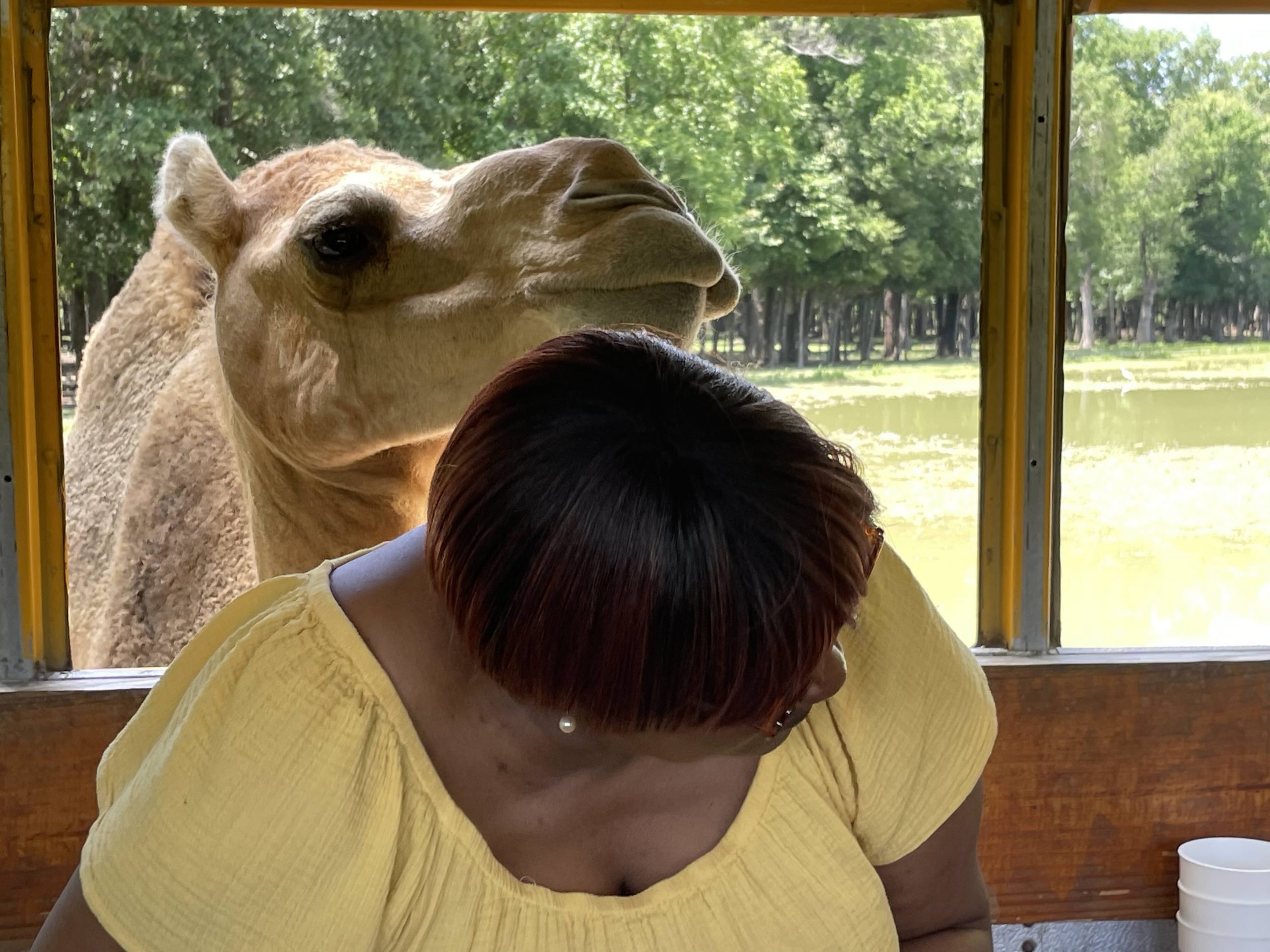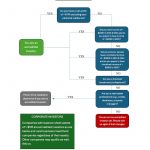
Hi, welcome to Bring Back the Bustle, a podcast about revitalizing rural America. I’m Shavon Jones, your host. Today’s topic is right sizing your rural business to achieve profitability in rural markets. We’ve entitled the episode: “Don’t Super Size It” so maybe some listeners are looking for a Big Mac. I don’t have any, but invite you to stick around. You may discover something about investing in rural America that appeals to you.
Rural America can support more businesses than Dollar General and Waffle House. This episode, at its core, is about how higher end offerings can succeed in rural America. And it sheds light on why an investment in our rural opportunity zone fund makes sense.
Last week we discovered that there’s enough money in rural communities to justify more businesses (more services and products) being available on the ground in these communities—so we are looking at bricks and mortar. During that episode I said that right-sizing a rural business was so important that it deserves its own episode. And so here we are.
We then discussed staffing problems in rural America and found solutions for those problems, paving the way for our businesses to open up shop in rural America. But just plopping, in a rural community, the exact footprint that you have in major cities may work and it may not. For example, fast food is the same size from community to community. They may vary the hours based on demand, but not the menu or the footprint. Walmart, by comparison, has different size footprints for different markets.
So clearly, I’m using the term “right-sizing” more broadly than the size of your workforce. I’m looking at your entire business model, particularly from a location standpoint.
Are you going to, or should you, locate in rural America? Or better yet, should you invest in a fund or company that has a rural strategy. I’ll leave that for you to determine.
The Usual Way of Deciding on Location
So let’s stick with our examples of company stores like Walmart or a franchise business model like McDonalds. But those particular company stores or franchises because already play in rural America, and they are on the low end. Today’s episode is about how higher end businesses can play. Let me choose a company store or franchise business model that doesn’t currently locate in rural communities. I’m going to go with a major hotel chain because they have company stores and they have franchisees. So the example will hold true under either business model.
Currently, the only product they place in a rural community is a Super 8 near the interstate for truckers, right. Let’s understand how they made that decision so we can decide whether to follow their method or do something different.
Those businesses have a profile for the ideal city or location where they want to establish a branch or franchise. They already know what they are selling and how much revenue they expect to earn per location. Next, they look for areas that fit their location profile. Once they decide on their ideal location, they pretty much eliminate other locations.
The ideal location often is based on where they think they are likely to find enough people to meet certain revenue metrics. They speculate that a town with X number of people will produce X number of customers. Without much work. The location, location, location mantra in real estate sometimes expects to rely primarily on foot or car traffic. There isn’t always a multi-layered customer acquisition plan. That way of doing business clearly works or they wouldn’t continue doing it.
But if you want to play in rural America on the higher end, your analysis should be a lot more layered than that. To right-size a rural business you need to either convert a larger percentage of the local customer base, adjust your offering, and/or use a smaller footprint. We get that here at the Rural Fund, and because this space has been left open for us, we are willing to spend the time right-sizing different offerings—offerings that solve pain points—for rural America.
Convert More
The “Convert More” strategy is, in my opinion, based on getting to market first and working hard to make your customers loyal and not likely to be poached by any potential new entrant. In fact, you want your relationship with your customers, in and of itself, to be so strong that it discourages new entrants. (There are common barriers to entry—high costs, high regulation. You want your relationship with your customer to be on the list of barriers to entry. And that’s possible because it is the opposite of what larger businesses have decided to do. To scale, their business model is to remove as much service as possible. To do as little as possible.
So what’s left for us is high end service at moderate prices. And that’s possible in rural areas where a business can be among the leaders in compensation and still not spend anywhere near what would be necessary in a larger city with a higher cost of living.)
Thus, the “convert more” strategy means you want to plant your flag and sew your space up. So, if you’re Dairy Queen, you want someone who was thinking about opening a Baskin Robbins to conclude “I don’t know what I could do better” and move on from that idea.
I suspect I may be losing you. Isn’t Dairy Queen Dairy Queen? Yes and no. And I’ll demonstrate how an existing brand can and should cater to a rural market. You also have the option of establishing a rural brand (a subsidiary) that fits rural markets—call it the Old Dutch Ice Cream Shoppe and make only homemade flavors—fresh peach ice cream in Summer. There’s probably a Mickey Dee’s in town that won’t be able to sell a single yogurt cone if Old Dutch opens up with that kind of menu.
Again, compare it to what is most prevalent in the market—how most businesses operate when they are first to market or when they otherwise have a monopoly. They don’t care about customer service because they know their customers have no place else to go. They raise prices without thinking about delivering more value for the extra money. And the quality of the offering can sometimes fall off, too. You start selling stale cones or running out of chocolate sauce.
If you want to keep the market to yourself, you have to resist those urges. Even though you’re the only option, don’t assume that always will be the case. Make it the case by maintaining standards and delivering value and a positive customer experience day in and day out.
When you fail to meet your standards (which happens to everyone from time to time), make it right with that customer. (“I’m sorry we’re out of chocolate sauce today. We have a shipment coming in on Friday. Here’s a dollar-off coupon. Come back and see us then. Today we have some homemade caramel sauce. Wanna try that.”) That way, she’ll be happy with the caramel sauce today and come back on Friday for her chocolate fix.
More important, she isn’t going to say: “I went to Old Dutch and they were out of ingredients.” Word-of-mouth in a small town is like a wildfire, it spreads so quickly and whatever impression you make it will be seared into the minds of the people who hear for a long time. We get that at the Rural Fund. Even though we’ve made the conscious decision to locate near big businesses, we understand that our business model is to own and operate a large number of successful small businesses.
Broaden Your Options
Another way for a small business (or a franchise location) to convert more prospects into customers is to broaden your offerings. If you’re going to play in rural America, think about whether you can profitably deviate from the offerings you make available in larger markets. I understand that that’s a sourcing issue and that buying less of an item means paying higher prices—losing economies of scale. I get all of that.
But in our last episode, we took note of how Walmart operates in both large and rural markets. Most of its products are the same from store to store, but you’ll also find latin foods in Miami stores and cajun foods in Louisiana stores, and I’m sure there are other regional variations across markets. In fact, I think Walmart may be overdoing the catering—which small businesses have to be careful about because it can open space for competitors. For example, don’t stock cajun foods to the exclusion of the lower salt foods you might sell in other markets. Add SKUs, don’t take them away unless they won’t sell. Just because someone buys Zataran’s rice dishes doesn’t mean they won’t also buy skim milk and reduced salt potato chips. Walmart seems to remove healthy SKUs in favor of unhealthy products that have regional appeal. Which is why I believe there’s space in rural America an epicurean grocer. I’m going to come back to the epicurean grocer example because it is a case in point for the smaller footprint option for competing in rural America.
Before that though, let me summarize the broaden your options play. In our example of the Dairy Queen: Think frozen yogurt for those on a diet and diabetic ice cream (assuming there is such a thing) for those who have that medical condition. And if there isn’t any diabetic ice cream that you can easily source, there may be someone in the rural community who can make it for you. Soon, everyone in town will be able to safely and happily enjoy your ice cream shop.
Smaller Footprint
Now, returning to the smaller footprint means of thriving in rural markets. One type of vendor sorely missing from rural markets is the epicurean grocer. There are no Whole Foods, The Fresh Market, or Trader Joe’s outside of major markets. But there are many smaller such stores cramming into major markets adequately served by those top epicureans chains. These smaller players can’t compete on price or selection. So they tend to get pushed out of the major markets. Rather than shuttering their businesses altogether or retreating to an internet only option, they should think about taking their brands to smaller markets where they won’t have to compete with better funded more recognizable epicurean stores.
You can have far fewer SKUs, much less square footage, fancier products at higher prices, and that store can absolutely thrive right next door to a Walmart, Winn Dixie or Piggly Wiggly. The consumer can buy the staples at the large supermarket and then buy the foods they love at the local epicure, Di Bruno Bros. or Zabar’s type epicurean grocer.
Rural Isn’t for Everyone
Rural markets may be better for private companies like ours that don’t have market analysts to answer to. Let’s take a huge retailer, Costco. The Costco nearest me home in Miami does $1M per day in revenue. There are 4 Costco locations in Miami-Dade County. I don’t know if they all do that well or if stores in other cities do as well, but if their ambition is for stores that do that much revenue, I concede that rural isn’t the right play for them.
But if our little epicurean grocery market can do one twentieth of that or $50,000 per day, that’s more than $18M in annual revenue. Assuming a 30% profit margin (which is really the minimum that attracts me to a business), that’s $5M per year, per store. And that’s the kind of volume investing strategy that we’re deploying at the Rural Fund. A few million in profits here, a few million there. And, over time, we end up with $40 or $50M in profits per year shared among our little investment group.
How the Rural Fund Delivers on Rural Investments
At the rural fund, we are absolutely committed to investing in rural America. We have designed our business model to generate revenues from this market segment for investors all across America. As I’ve explained in previous podcast episodes, the way to make money in rural America is to own both the real estate and the businesses operating in that real estate.
Operating businesses must be right-sized for rural markets. That’s what we do best at the Rural Fund—identify businesses that solve a pain point for rural customers, right-size the business, and the deliver a customer experience that quietly implies “this town ain’t big enough for both of us” to anyone thinking of competing the the same space as us.
Maybe that’s what I should have named this episode: This Town Ain’t Big Enough for Both of Us. We intend to own these little markets, and we’ll talk more about our unique ability to do so next week. This is Shavon. I’m looking forward to it, and I hope you are too.



No responses yet